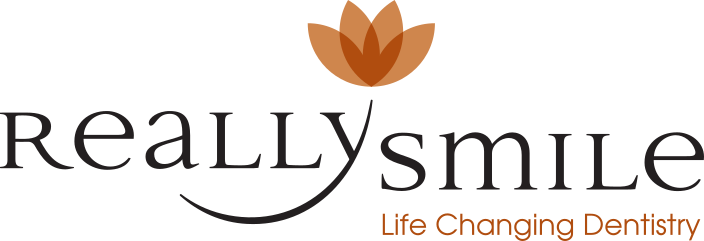3D X-Ray CBCT
Dental Cone Beam Computed Tomography (CBCT) is an advanced imaging technique specifically designed for dentistry, providing detailed three-dimensional views of the teeth, jawbone, and surrounding structures with minimal radiation exposure. Unlike conventional dental X-rays, CBCT captures high-resolution images from various angles around the patient's head, which are then reconstructed into a comprehensive 3D model.
This technology enables our dentist in Carmel, IN, to accurately assess dental anatomy, detect abnormalities such as impacted teeth or infections, plan for dental implants, orthodontic treatment, or oral surgeries, and evaluate the extent of dental conditions or injuries. Dental CBCT offers unparalleled precision and diagnostic capabilities, revolutionizing dental care by facilitating more accurate treatment planning and improving patient outcomes.
The Applications of Dental 3D X-Ray Cone Beam Computed Tomography (CBCT)
Comprehensive Assessment of Dental Anatomy
Dental CBCT enables practitioners to obtain detailed three-dimensional images of the teeth, jawbone, temporomandibular joints (TMJ), sinuses, and surrounding structures with unparalleled clarity. This comprehensive visualization allows for a thorough assessment of dental anatomy, facilitating the detection of abnormalities, such as impacted teeth, root fractures, cysts, or tumors, which may not be readily apparent on conventional two-dimensional radiographs.
Precise Treatment Planning for Dental Implants
Planning for dental implant placement demands meticulous precision to ensure optimal outcomes. CBCT imaging provides dentists at Really Smile with precise information regarding bone density, volume, and morphology, allowing for accurate pre-surgical planning.
By visualizing the patient's anatomy in three dimensions, our dentist can identify the ideal implant position, determine the appropriate implant size and angulation, and assess the proximity to vital structures, such as nerves and sinuses, thereby minimizing the risk of complications and enhancing implant success rates.
Orthodontic Assessment and Treatment Planning
In orthodontics, CBCT has emerged as a valuable tool for assessing skeletal and dental relationships, evaluating airway dimensions, and predicting treatment outcomes more accurately. By obtaining detailed 3D images of the craniofacial structures, including the position and orientation of teeth, bone morphology, and soft tissue anatomy, orthodontists can formulate more precise treatment plans, such as determining the need for extractions, identifying impacted teeth, or planning orthognathic surgery.
Additionally, CBCT facilitates the fabrication of customized orthodontic appliances, such as clear aligners or braces, tailored to the patient's unique anatomical features.
Diagnosis and Management of Temporomandibular Disorders
Temporomandibular disorders encompass a range of conditions affecting the TMJ, muscles of mastication, and associated structures, causing pain, dysfunction, and discomfort. CBCT imaging allows for a comprehensive evaluation of TMJ morphology, condylar position, and bony abnormalities, aiding in the diagnosis and classification of TMDs.
By precisely visualizing the anatomical structures involved, clinicians can develop individualized treatment plans, including splint therapy, physical therapy, or surgical intervention to alleviate symptoms and improve jaw function.
Endodontic Evaluation and Treatment
In endodontics, CBCT is crucial in diagnosing complex root canal anatomy, identifying canal morphology variations, and assessing the extent of periapical pathology. By capturing high-resolution 3D images, CBCT facilitates a more accurate localization of root canal systems, detection of calcified canals, and evaluation of treatment outcomes.
This advanced imaging modality empowers endodontists to perform root canal procedures with greater precision, thereby improving the prognosis of endodontic treatments and reducing the likelihood of post-operative complications.
The Procedure for 3D X-Ray CBCT
The dental 3D X-ray Cone Beam Computed Tomography (CBCT) procedure in Carmel, IN, begins with the patient seated comfortably in the imaging unit, typically resembling a dental chair. The CBCT machine consists of a rotating gantry that houses the X-ray source and detector, which moves around the patient's head in a circular motion.
During the scan, the patient is positioned with their head stabilized using bite blocks or a chin rest to minimize movement and ensure accurate imaging. The CBCT system captures a series of X-ray images from multiple angles around the patient's head, generating a comprehensive oral and maxillofacial region dataset. Once the imaging is complete, advanced computer algorithms reconstruct these images into a detailed three-dimensional representation, providing dentists and oral surgeons with precise anatomical information for diagnosis, treatment planning, and evaluation of dental conditions.
Throughout the procedure, radiation exposure is carefully controlled to minimize patient risks while achieving high-quality imaging results. Additionally, lead aprons and thyroid collars may be utilized to protect the patient from unnecessary radiation exposure. Overall, the dental CBCT procedure offers a non-invasive and efficient means of obtaining detailed three-dimensional images of the teeth, jawbone, and surrounding structures, facilitating accurate diagnosis and personalized treatment planning in various dental scenarios. Contact us today to learn more!
The Benefits of 3D X-Ray CBCT
- Enables precise detection of dental abnormalities, including impacted teeth, root fractures, cysts, tumors, and other pathologies, leading to more accurate diagnoses.
- Offers detailed, three-dimensional images of dental structures, allowing for a thorough assessment of teeth, bone, nerves, and soft tissues.
- Provides detailed anatomical information to facilitate precise pre-surgical planning for procedures such as dental implants, orthodontic treatments, endodontic procedures, and oral surgeries.
- Typically, it involves lower radiation doses than traditional CT scans, ensuring patient safety while delivering high-quality diagnostic images.
- Enables dentists to tailor treatment plans to each patient's unique anatomy, resulting in improved treatment outcomes, reduced risk of complications, and enhanced patient satisfaction.
- It is useful in various dental specialties, including implant dentistry, orthodontics, endodontics, oral and maxillofacial surgery, periodontics, and temporomandibular joint (TMJ) assessment.
Dental 3D X-ray Cone Beam Computed Tomography (CBCT) is a transformative technology that has revolutionized dentistry. Visit Really Smile at 3003 East 98th St. Ste. 241, Carmel, IN 46280, or call (317) 841-9623 to schedule your dental 3D X-ray CBCT scan today for precise diagnosis and personalized treatment planning.
Visit Our Office
Carmel, IN
3003 East 98th St. Ste. 241, Carmel, IN 46280
Email: [email protected]
Request An AppointmentOffice Hours
- MON7:45 am - 5:00 pm
- TUE8:00 am - 3:00 pm
- WED7:00 am - 3:00 pm
- THU8:00 am - 3:00 pm
- FRIClosed
- SATClosed
- SUNClosed
